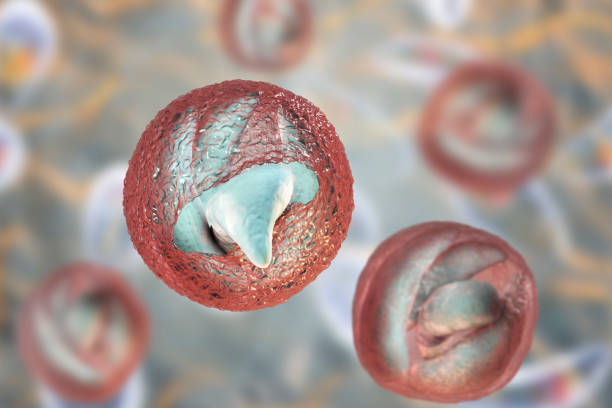What is **Cryptosporidium**?
Creator: Dr_Microbe | Credit: Getty Images/iStockphoto

1. Filtration
Conventional Filtration: This method includes coagulation, flocculation, sedimentation, and filtration. Life Straw, Sand or multimedia filters are effective at removing Cryptosporidium oocysts from water.
Microfiltration and Ultrafiltration: These membrane filtration techniques can effectively remove Cryptosporidium due to their small pore sizes.
Diatomaceous Earth Filtration: This is a fine filter that can also be used to remove Cryptosporidium from water.
2. Disinfection
UV Radiation:
Ultraviolet (UV) Ozonation: Ozone is a powerful oxidant that can inactivate Cryptosporidium. It is often used in combination with other treatment processes for enhanced effectiveness.
3. Chlorination
Chlorine is less effective against Cryptosporidium compared to other pathogens because of the thick protective wall of the oocysts. However, when used in combination with other methods, it can be part of an effective treatment strategy.
4. Boiling
Boiling water for at least one minute (three minutes at higher altitudes) is a sure way to kill Cryptosporidium oocysts.
5. Reverse Osmosis
Reverse osmosis (RO) filtration can remove Cryptosporidium by forcing water through a semipermeable membrane that does not allow the oocysts to pass through.
6. Slow Sand Filtration
This biological filtration process can be effective in removing Cryptosporidium through a combination of physical straining, adsorption, and biological activity.
Practical Considerations:
Source Water Protection: Preventing contamination of water sources with Cryptosporidium is critical. This includes protecting watersheds and maintaining sanitary conditions in catchment areas.
Multiple Barrier Approach: Using a combination of the above methods provides a more reliable barrier against Cryptosporidium contamination.
Monitoring and Maintenance: Regular monitoring of water quality and maintenance of treatment systems are essential to ensure ongoing effectiveness in removing Cryptosporidium.
By implementing these methods, water treatment facilities can significantly reduce the risk of Cryptosporidium contamination and ensure safe drinking water.
As an Amazon Associate, I earn from qualifying purchases. This means that if you click on an Amazon link on this site and make a purchase, I may receive a small commission at no additional cost to you. This helps support the website and allows me to continue to provide content for you. Thank you for your support!
